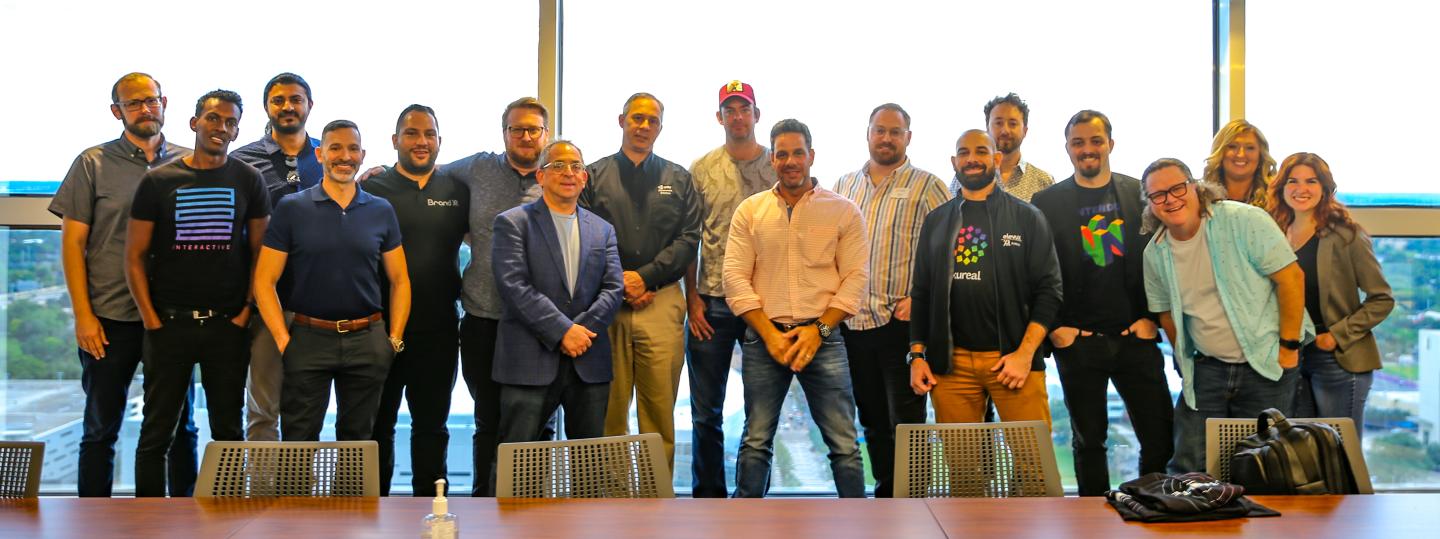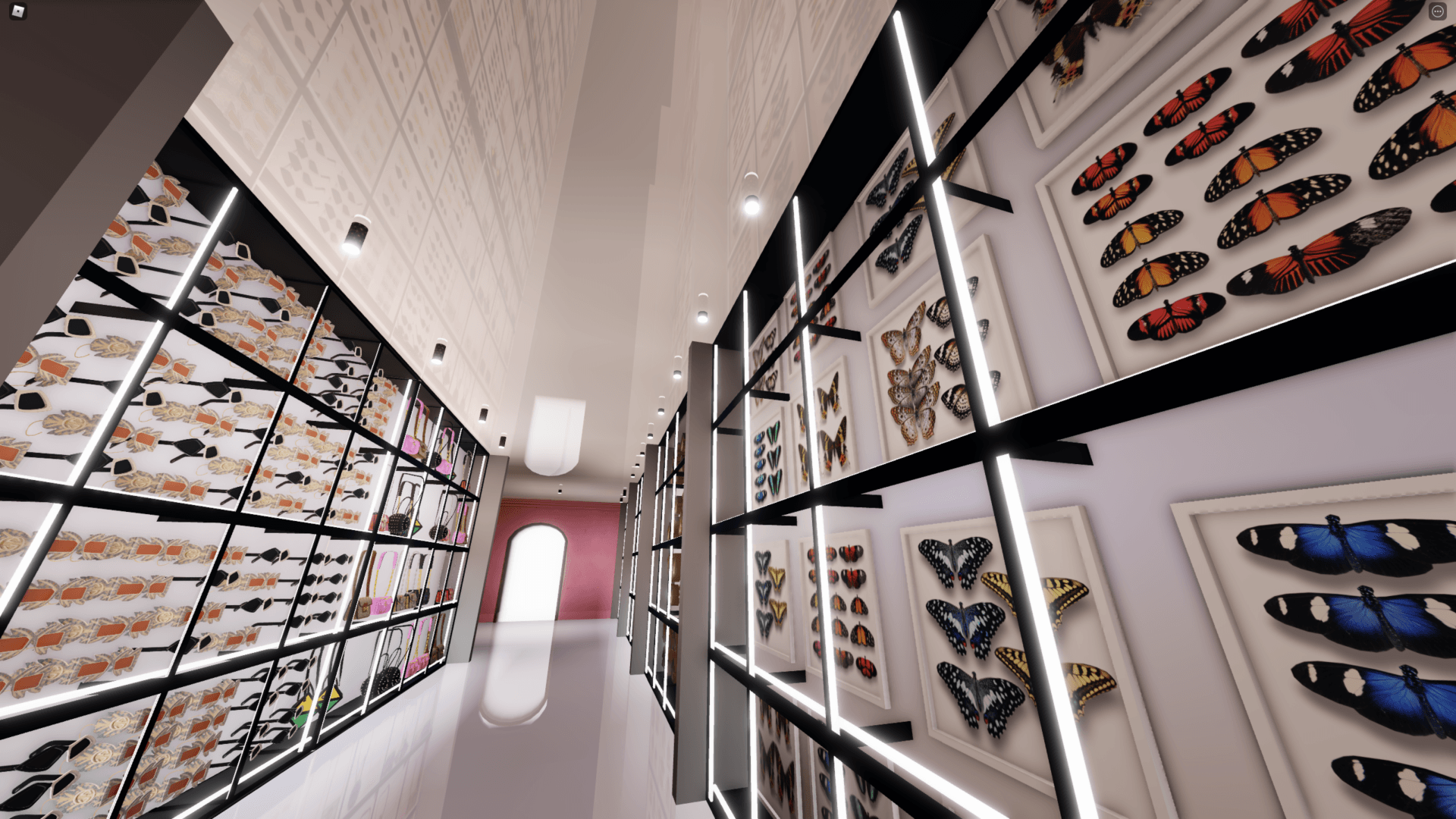NBA Go? Niantic building hoops AR game; Walmart acquires AR virtual try on partner; Metaverse's positive impact
NBA's Pokemon Go clone, Walmart's AR strategy and the Metaverse's expected impact
Welcome to the Metaverse #9

Pokemon Go creator to build NBA All World, licensed game that puts players in the Metaverse
Not much information has come out so far about NBA All World, a Metaverse-centric universe being built by Niantic, the creators of Pokemon Go.
But, well, if you ever spent time chasing down Charlizards and Mewtews in their neighborhood then you probably trust this augmented reality company.
The gist seems to be that you walk around in the real world and bump into real-life NBA stars (just like you did Pokemon in the 2016 game).
You can then recruit them for your team and take on other teams as you walk around to different basketball courts in the real world, which the article linked below speculates is this game's version of Pokemon gyms.
Bonus content: the development partner on this game is none other than HypGames, an Orlando-based tech company behind several interactive sports video games.
Check out more about this game AT THIS LINK.
OUR TAKE

Man, this could be huge.
Remember how crazy the hype around Pokemon Go was in 2016, fueled by the licensing of a franchise that was an absolute behemoth?
Now try that with sports fans.
As a big sports and video game fan, I am really interested to see how this plays out.
I gave Pokemon Go a shot when it debuted but didn't keep up too long with it, honestly.
It wasn't even that I didn't find it enjoyable but my use of it did diminish rather quickly.
But I really want to see how this kind of game can work if, say, I was able to recruit the Orlando Magic's #1 pick Paolo Banchero then head over to Dick's Sporting Goods down the road and get him some virtual gear.
Stay tuned here for more details as they become available.
Gucci's Roblox-based Metaverse play has more than 18 million visitors
Just as Top Gun opens in theaters to huge crowds, one of the more noteworthy stories in recent weeks has been the emergence of a Florida company (hi, neighbor!) that seems to understand how the Metaverse will be built as it creates a high-flying fighter jet simulator for training.
Red 6, who we have mentioned in this newsletter before, has given more of a glimpse into its ... how do we explain it?
An overlay, perhaps, installed in a fighter jet that augments a pilot's view with enemy fighters and/or friendlies to more accurately replicate an actual dogfight.
Sounds like Star Wars, right?
That's no mistake.
Red 6's CEO Daniel Robinson cited that as an influence on his career before he joined the military.
Check out a local news feature AT THIS LINK. I'm sure there will be more stories to come on these guys.

OUR TAKE
The luxury fashion company Gucci has reportedlly seen more than 18 million visitors to its Roblox-based virtual world.
It's news that already has resulted in other top brands to follow suit or at least explore what they could do within this new world.
The trend is a precursor to the further expansion of Web3, which will offer new opportunities for businesses.
Ultimately, as this article states, it's establishing that Web3 presence for the inevitable: "when the masses begin to adopt digital's new frontier and start spending their time and money in alternate universes."
Gucci Town is a "virtual piazza" in Roblox, which will allow visitors to connect, create artworks or take part in branded competitions.
Why is Gucci so bullish on the Metaverse? Probably because a VIRTUAL GUCCI BAG sold for $4,115 in 2021, which is more than most IRL Gucci bags.
For more information and to check out the article, CLICK HERE.

Walmart acquires Memomi AR smart mirror company
The retail giant Walmart has bought an augmented reality experience company that has been building its AR products since 2013.
The company will buy Memomi, a Palo Alto, Calif.,-based business that specializes in virtual try-on experiences for eyewear.
The company is already providing services in 2,800 Walmart Vision Centers and 550 Sam's Club stores.
Deal terms were not disclosed.
Memomi has built experiences in several areas, including beauty, fashion, accessories and footwear, along with the virtual optical try-on service it offers in Walmart.
However, Walmart has not said whether it will expand the service into these areas.
Check out TECHCRUNCH'S STORY RIGHT HERE.
OUR TAKE

Walmart's potential deeper dive into augmented reality is potentially a major event, primarily because of how huge this company's reach is to the general consumer.
We have said in the past here in this newsletter that slowly, but surely, we will see larger companies figure out their own AR strategies.
Walmart appears to be moving toward it.
Now, in the story (and our summary above), it's mentioned that Walmart would not say whether it would move Memomi's capabilities under its umbrella beyond virtual try-ons of vision tools.
But you generally don't buy another company unless you have big plans for it.
I would bet money (maybe not my money) that they do, indeed, have ideas on how to go further into the emerging technology.
If they do, prepare for the company to be a huge portal for consumers to jump into this tech.

Another study shows Metaverse could create $5 TRILLION in value by 2030
It's becoming a repetitive thing and that's GOOD.
You need to go check out this detailed, 77-page look at the future of the Metaverse done this month by McKinsey & Co.
There are a ton of really good nuggets in there.
One of the most important things, if you ask me, is at the start of Page 3:
"The Metaverse is still being defined."
Exactly. That's why premature criticisms really are, well, premature. Remember the Internt was a fad, too.
Here are a few facts from the study for you to chew on before you head over there:
* The Metaverse could impact everything from employee engagement, customer experience, sales and marketing, product innovation and community building (that's a lot of entry points for businesses).
* Corporations, venture capital firms and private equity firms invested more than $120 billion in the first five months of 2022.
* 60% of consumers are excited about transitioning more of their activities to the Metaverse.
* A WHOPPING 95% of business leaders expect the Metaverse to have a positive impact on their industry within 5-10 years.
* Ecommerce ($2-2.6 trillion), academic virtual learning ($180-270BILLION) and advertising ($144-206BILLION) are three of the top industries that will likely be positively impacted by the Metaverse by 2030.
Please, please, please check out the study below. A TON of good information there for any who are skeptical.
HERE IS THE STUDY, IN ITS ENTIRETY.
WHY IT MATTERS

Data, data data!
This could become the definitive study on where we are going with the Metaverse, as this was conducted by a top agency, surveyed 1,300 consumers on their viewpoints of its viability and a good number of businesses on their strategies.
I feel like I write this at least once a month but it's important to say: yes, we are the choir these guys are preaching to.
We clearly believe strongly in where the Metaverse will take society.
But, on a bigger note, we didn't commission this study.
The nuggets we shared above are really only the beginning.
So pour yourself a glass of wine/beer/seltzer/water, sit back and ingest that long report to see where your business might fit within this bold new world, which is coming soon.
We hope you like what you see. We bet your friends would, too!
Forward to other Metaverse and XR junkies and let's build this community!
VentureBeat mentions BrandXR in piece praising Orlando tech's Metaverse push!

We certainly have pride in the communities that we call home, Detroit and Orlando, Fla.
So it has been cool to see Orlando - yes, home to Mickey Mouse - get some notoriety for things happening beyond theme parks.
VentureBeat recently recognized the Central Florida region and, specifically, Orlando, as a city that is innovating within the new Metaverse technology.
If you are from Central Florida, this is no surprise.
So many of the technologies - AR, VR, gaming, simulation - that will be at the center of the Metaverse build have large presences in Central Florida.
Not many outside our region or outside the industry know that the largest military simulation and technology trade show in the world comes to Orlando every winter.
So most large companies have some presence here.
However, of late, more companies have received recognition for building in next-generation technologies.
It was cool to see BrandXR one of the companies mentioned alongside Lockheed Martin, Red 6, Disney and others as leaders of the region's push toward being a Metaverse leader.















